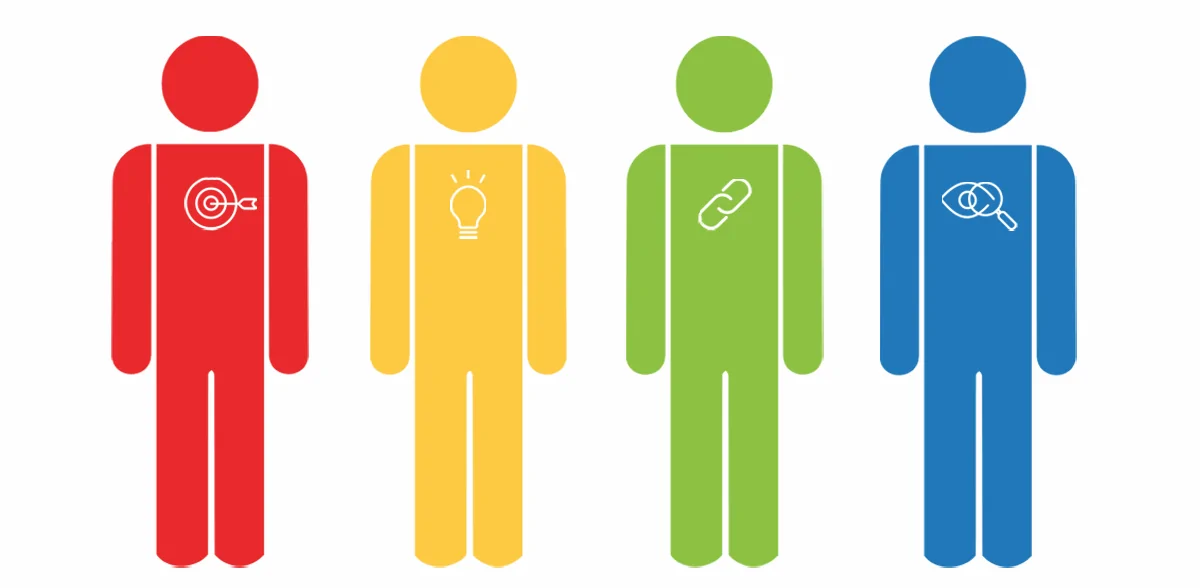Leadership is not one-size-fits-all. Whether you’re managing a startup team or leading a corporate department, understanding your DISC leadership style can dramatically improve how you lead, communicate, and influence others.
The DISC personality model—Dominance, Influence, Steadiness, and Conscientiousness—offers valuable insights into leadership behavior, strengths, and blind spots.
In this article, we break down each DISC leadership styles and how it impacts team dynamics, productivity, and morale.
What Is the DISC Personality Model?
The DISC model is a behavioral assessment tool that categorizes people into four main personality types:
- D – Dominance
- I – Influence
- S – Steadiness
- C – Conscientiousness
Each type reflects how individuals respond to challenges, influence others, handle pace, and follow rules. These traits influence leadership effectiveness and communication style in the workplace.
Why DISC Matters in Leadership
Understanding your DISC leadership style allows you to:
- Lead authentically and effectively
- Build balanced, high-performing teams
- Resolve conflict with emotional intelligence
- Adapt your communication to different team members
- Boost collaboration and trust
D – Dominant Leadership Style (The Driver)
Traits:
- Decisive
- Results-oriented
- Competitive
- Direct and assertive
Leadership Strengths:
- Pushes for results and performance
- Makes quick, bold decisions
- Handles high-pressure situations well
- Motivates teams through challenge and urgency
Challenges:
- May appear blunt or aggressive
- Can overlook emotional or personal concerns
- May dominate conversations or ignore feedback
Ideal Environment:
- Fast-paced companies
- Sales or performance-driven teams
- Goal-focused cultures
Famous D-style leaders: Steve Jobs, Gordon Ramsay, Elon Musk
I – Influential Leadership Style (The Motivator)
Traits:
- Outgoing
- Enthusiastic
- Charismatic
- People-focused
Leadership Strengths:
- Builds strong team morale
- Excels at public speaking and inspiration
- Promotes creativity and collaboration
- Creates a fun, engaging workplace culture
Challenges:
- May lack focus on details
- Can avoid confrontation or difficult decisions
- Might over-promise and under-deliver
Ideal Environment:
- Marketing, PR, event planning
- Customer service teams
- Creative and collaborative industries
Famous I-style leaders: Richard Branson, Oprah Winfrey, Tony Robbins
S – Steady Leadership Style (The Supporter)
Traits:
- Patient
- Loyal
- Reliable
- Empathetic and team-oriented
Leadership Strengths:
- Excellent listener and mediator
- Promotes team harmony and cooperation
- Offers consistency and emotional safety
- Provides hands-on support and mentorship
Challenges:
- May avoid change or risk
- Struggles with urgency or fast pivots
- Can be indecisive in conflict
Ideal Environment:
- HR, healthcare, education
- Non-profits and social services
- Stable team-focused companies
Famous S-style leaders: Mr. Rogers, Mahatma Gandhi, Mother Teresa
C – Conscientious Leadership Style (The Analyst)
Traits:
- Detail-oriented
- Analytical
- Methodical
- Process-driven
Leadership Strengths:
- Sets high standards and expects quality
- Makes data-driven decisions
- Excellent at planning and risk assessment
- Holds teams accountable to processes and precision
Challenges:
- May appear cold or overly critical
- Perfectionist tendencies can slow progress
- Can resist improvisation or emotional appeals
Ideal Environment:
- Finance, IT, engineering
- Quality control departments
- Data and compliance-driven industries
Famous C-style leaders: Bill Gates, Warren Buffett, Albert Einstein
How to Identify Your DISC Leadership Style
To find your DISC type, you can:
- Take a DISC assessment test (many are available online)
- Observe your behavior under stress, in meetings, and during conflict
- Reflect on your decision-making and communication style
- Ask team members for feedback on your leadership approach
Most leaders are a blend of two dominant styles, like a DI or SC. Understanding your combination helps refine how you lead.
How DISC Leadership Styles Complement Teams
The best-performing teams often include a balance of DISC styles:
- D types drive performance
- I types boost energy and culture
- S types ensure stability and team harmony
- C types uphold quality and compliance
Great leaders adapt their leadership based on the styles and needs of their team members.
DISC Style Comparison Chart
| Style | Strengths | Challenges | Best In |
| D | Bold, fast-paced, goal-driven | Impatient, blunt, risk-tolerant | Startups, sales, operations |
| I | Inspiring, social, energizing | Distracted, emotional, impulsive | Marketing, creative industries |
| S | Loyal, dependable, empathetic | Conflict-averse, resistant to change | Healthcare, HR, education |
| C | Analytical, organized, perfectionist | Overcritical, rigid, slow to adapt | Finance, IT, law, engineering |
Conclusion
All DISC leadership styles bring unique strengths. The most effective leaders:
- Know their dominant style
- Embrace their strengths
- Actively work on their blind spots
- Adapt their approach based on the situation and the people around them
Whether you’re a direct “D,” a charismatic “I,” a steady “S,” or a thoughtful “C,” mastering your DISC profile helps you lead with intention, empathy, and effectiveness.
FAQs
1. What does DISC stand for in leadership?
DISC stands for Dominance, Influence, Steadiness, and Conscientiousness—the four core behavioral types that impact leadership and communication.
2. Can you be more than one DISC type?
Yes. Most people exhibit a combination of two or more DISC styles, with one dominant trait. For example, someone may be a DC (Dominant-Conscientious) or IS (Influence-Steadiness).
3. How can DISC help in team leadership?
DISC helps leaders understand team dynamics, resolve conflict, and communicate effectively with different personality types. It builds stronger, more cooperative teams.
4. Which DISC style makes the best leader?
There is no single “best” style. Effective leaders understand and adapt their DISC strengths based on team needs, goals, and challenges.
5. How do I take a DISC assessment?
You can take a DISC assessment online through platforms like Tony Robbins, DISC Personality Testing, or TTI Success Insights. Many HR software platforms also include DISC tools.
Also read: Global Business Today: Trends, Challenges, and Strategies in 2025




Leave a Comment